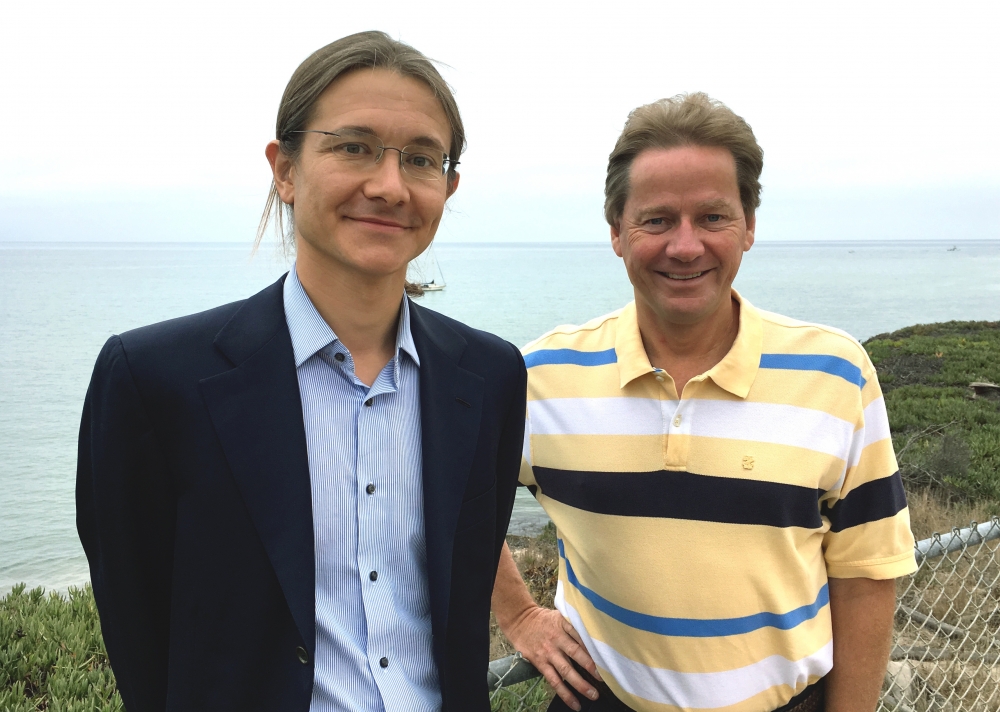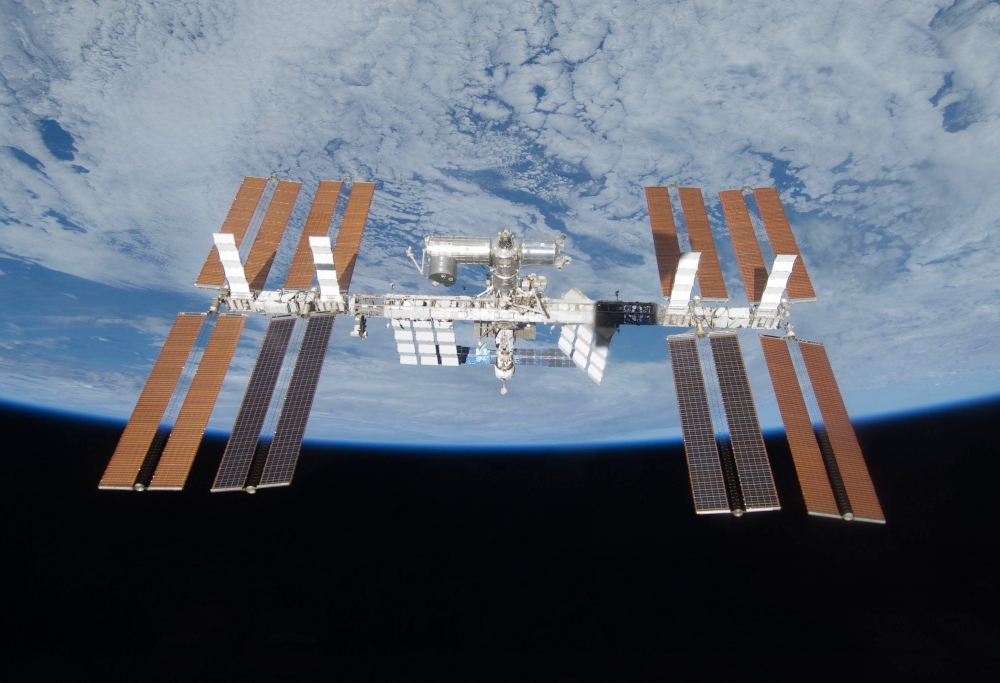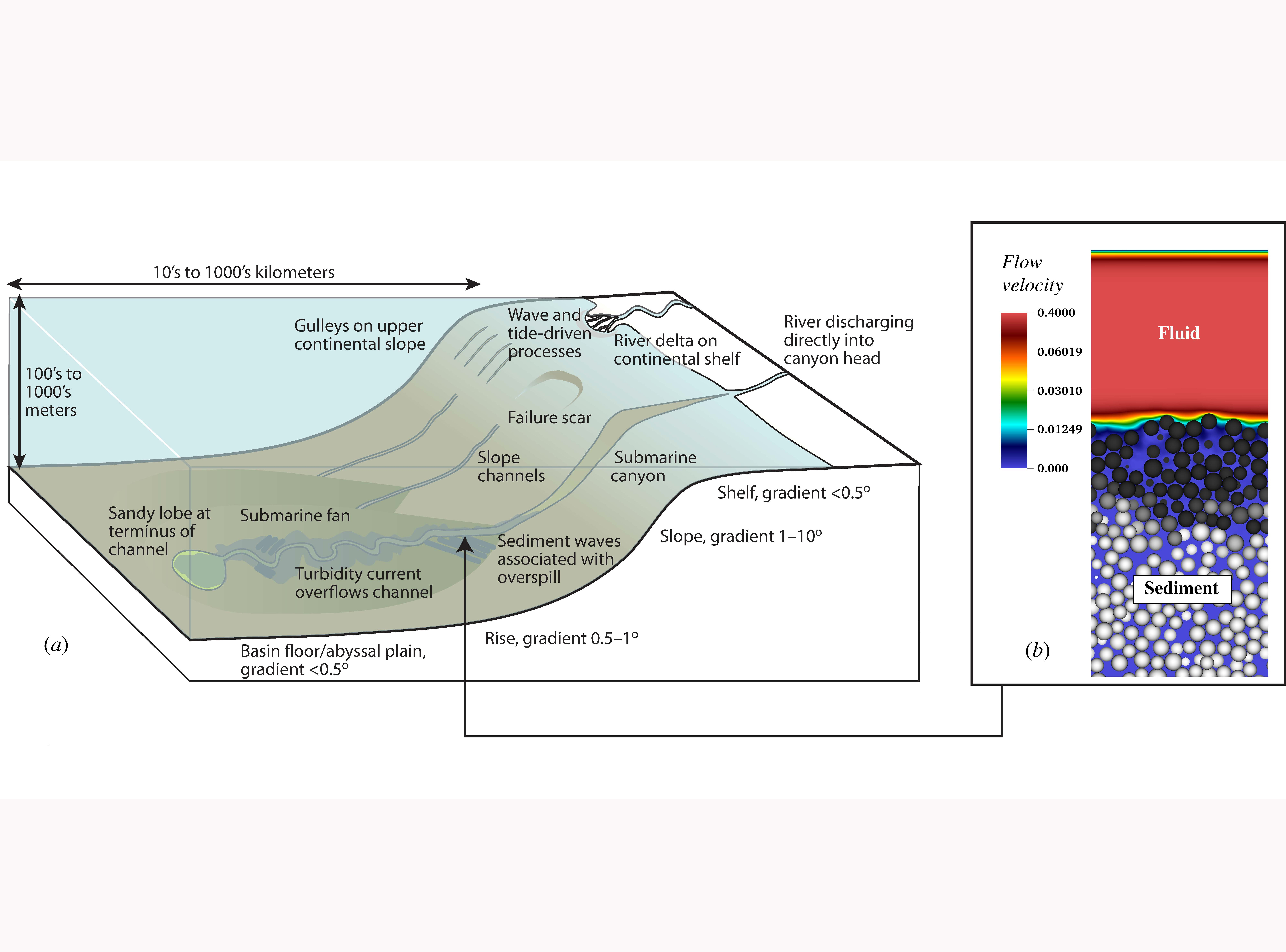Sediments in Space

In 1929 one of the deadliest earthquakes in Canadian history occurred, when a magnitude 7.2 temblor centered about 250 miles south of the island of Newfoundland rocked the region.
But it wasn’t the quake that killed the 28 people who died as a result of that disaster. The seismic activity set off the largest submarine landslide ever recorded in that area. And that in turn triggered a tsunami that traveled as far to the east as Portugal and as far south as South Carolina. And in so doing, it decimated a dozen transatlantic telecommunications cables. The gigantic wave killed 25 people; the remaining three died from exposure.
So the quake, you might say, was the straw that broke the camel’s back. A very large and very old camel, built over millennia — maybe even longer — by one of the Earth’s oldest and most commonplace processes: sediment transport. It was the buildup of sand, clay and other small individual particles on the underwater plateaus along the continental shelf that, when finally released, caused the killer wave.
UC Santa Barbara mechanical engineers Eckart Meiburg and Paolo Luzzatto-Fegiz are intrigued by sediment transport, particularly the forces that cause the attraction between tiny discrete sediment particles in moving fluid. Fueled by a recent grant from the National Science Foundation (NSF) and the Center for the Advancement of Science in Space (CASIS), the researchers will investigate one of Earth’s most basic terrestrial phenomena…sans Earth.
“We’re trying to understand some fundamental processes that govern the transport of sediment,” said Meiburg, whose specialties lie in the area of fluid dynamics and transport phenomena.
According to Luzzatto-Fegiz, who studies fluid mechanics, the particular phenomenon they are interested in — the electrostatic forces that attract these solid particles together in fluid — are difficult to study because they are largely obscured by gravity.
“For example, when you have rivers that send sediment to the ocean, the sediment is made up of particles of clay, sand and other matter,” he said. “And as these particles sink into the ocean, they very slowly come together, due to some very weak, but very important electrostatic forces.” These forces, in part, are behind the cycle of nutrients in the ocean, or the accumulation of minerals.
“However, if you want to try to measure these forces in the lab, that’s very hard to do, because you can’t get a tank that’s deep enough to experiment,” Luzzatto-Fegiz explained.
Enter the International Space Station (ISS), the extraterrestrial research vessel in a constant state of free fall around the planet — perfect for eliminating at least most of the gravity that would affect sediment transport on Earth.
The experiments themselves — designed by Meiburg and Luzzatto-Fegiz to be sent into space and run by astronauts — are fairly straightforward. Cameras will be employed to monitor the different particles as they interact with one another in fluid in near-zero gravity. Light shone at and through the setups will help the researchers track the motion and observe the density of these particles. A parallel mock-up of the experiment will be built on Earth to help the researchers understand what to expect.
The project, formulated in response to a solicitation from the NSF to study fundamental fluid phenomena on the ISS, is expected to take about two years.
Data from these experiments, the researchers said, could contribute to a better understanding of many fluidic processes, such as the descent of marine snow — the biological debris that drift from the upper layers of the ocean to the bottom. The movement of nutrient-containing sediment could also contribute to the modeling of ecological processes, such as the low-oxygen dead zones that appear as a result of excessive amounts of fertilizer washing into the ocean from nearby agricultural operations, or the occurrence of optimal levels of life-supporting nutrients that could support habitats.
Following the tracks of sediment transport may also yield information about how mineral and oil deposits accumulate. And, by extrapolating back in time, the researchers may also be able to reconstruct what the seafloor looked like in much the same way geologists can look at a millennia-old rock formation and understand what the land looked like a long time ago. Or, they added, understanding the behavior of sediment particles in fluid can offer insight on more contemporary issues, such as water quality.
“It’s fundamental research that, if successful, will benefit a lot of different areas,” Meiburg said.





